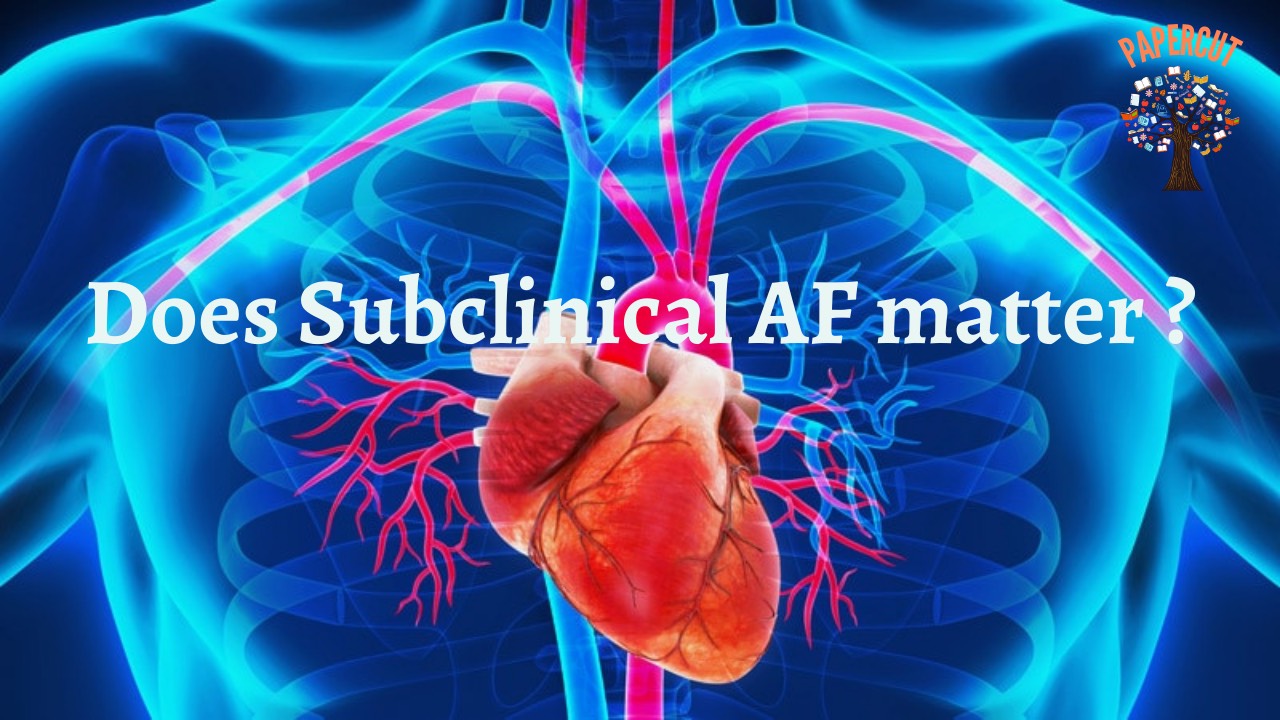You might ask; “Why’s is subclinical Atrial fibrillation important?” We know that patients in atrial fibrillation(AF) have a 5 x risk of stroke compared to those not in AF and that even short bursts of AF predispose to stroke. These can be avoided with anticoagulant use. (25 minutes reading)
Does subclinical atrial fibrillation also predispose to stroke and do we know if patients who present with AF, have had recent subclinical AF?
The Bottom Line is:
- Subclinical Atrial Fibrillation is common and ranges in incidence for 9% to 30%
- Atrial tachyarrhythmias represent a 2.5 factor increase in the risk of ischaemic stroke or systemic embolism
- Although the burden of AF needed for stroke has been postulated to be about 6 minutes, finding episodes of < 30 seconds in patients with stroke is not uncommon.
- There appears to be no temporal relationship in patients with subclinical atrial fibrillation and stroke.
- There is a temporal relationship between cardioversion and stroke, with the majority of strokes and TIAs occurring with the median time from cardioversion to event of 2 days and over 80% of events occurring during the first week after the cardioversion.
- Earlier cardioversion (<12 hours) is associated with lower risk of thromboembolism
- Heart failure and diabetes are associated with a higher risk of thromboembolism.




